Exploring some of the many gods and goddesses of Ancient Egyptian civilisation and their significance within society.
This is a bronze hook from Ancient Egypt.
This object or artefact takes us back over three thousand years to the New Kingdom. In Ancient Egypt, when someone important died, their body was mummified to prepare them for burial.
To start with embalmers removed all moisture from the body, including the organs which they placed in special containers- called canopic jars - to dry.
That's where our artefact comes in: it was used to pull the brains out through the dead person's nose. Uh, yuck!
The heart was the only organ left in place and that's because the Ancient Egyptians believed the 'essence' or 'soul' of a person was in their heart.
The mummification process took seventy days to complete. It involved lots of different stages, including rubbing the body with oils and wrapping it in linen.
But why did they go to all that effort?
Well, that comes down to their religion which celebrated lots of different gods and goddesses each with their own role to play.
Ancient Egyptians believed they would be judged by their gods and goddesses to see if they could move on to the afterlife.
Mummification was just one step in preparing for the afterlife.
Osiris was chief god of the dead and one of the most popular gods.
He's usually shown as a mummified human wearing a white crown and holding two farming tools in his hands: the crook and the flail.
His skin is often green because he was also the god of vegetation growth and rebirth.
He's described as a judge in the 'Hall of Truth', where the heart of the dead person was weighed against a feather to see if they were good enough to pass on to the afterlife.
Osiris: Oh dear! No afterlife for you I'm afraid. Next! Oh excellent, welcome to the afterlife.
Nephthys, wife of Osiris, was known as friend of the dead because she looked after the souls of the dead in the afterlife.
She was one of the few goddesses, worshipped throughout the entire 3000 year period, so her image has been found byarchaeologists at many tombs and temples, including the tomb of King Tutankhamun.
But the gods and goddesses that the Ancient Egyptians worshipped were about more than just the afterlife.
They controlled every part of nature and daily life.
Tawaret was a goddess of childbirth and a protector of women and children. She was thought to be a ferocious demon as well as a protective and caring goddess. Do you know anyone else like that?
Lady: Hey!
Anyway, Tawaret had the body of a hippo, the legs of a lion and the tail of a crocodile. These were animals that were equally feared and respected by the Ancient Egyptians.
As well as the 'state gods' that everyone knew about, people had their own local gods and goddesses and those worshipped in one village can be very different from the next village.
Traveller 1: Who's that guy?
Traveller 2: Montu? Never heard of him!
If a particular person or city became the most powerful then their local gods became the 'state gods'.
This meant that a particular god or goddess could be popular for a few decades, then they would go out of fashion, the temple pulled down and the stone reused.
Around 1353 BC the Pharaoh Akhenaten tried to change the way gods were worshipped in Egypt.
Instead of having multiple gods and goddesses, each with different roles, he placed one god, the god Aten, above all others and introduced a Atenism.
This was not a popular decision, so after he died Akhenaten's monuments and statues were destroyed and hidden and his namewas removed from the list of rulers.
Religious beliefs changed a lot during Ancient Egyptian history.
But what remained the same was the important role that gods and goddesses played in people's lives, their deaths and their journey onto the afterlife.
Gods and goddesses
Video summary
This video gives pupils an introduction to the role of religion and gods / goddesses in Ancient Egyptian society.
It helps pupils to explore the process of mummification and how pharaohs were believed to become gods and goddesses after death.
We explore an artefact to help unearth the story of the past and find out more about how people lived and what they believed in.
The video explains the various roles that gods and goddesses had in Ancient Egyptian society and how each had a distinct purpose, with some of these being more important to the Ancient Egyptians than others.
It also explores how the roles of gods and goddesses changed over the years and how the beliefs and feelings of different pharaohs caused particular gods / goddesses to fall in or out of fashion.
Further resources
Click to display the image full-size
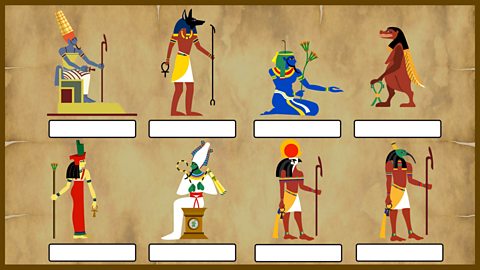
Click to display the image full-size
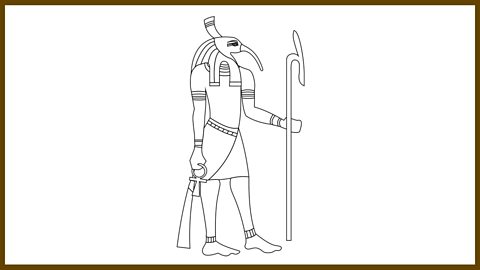
Click to display the image full-size
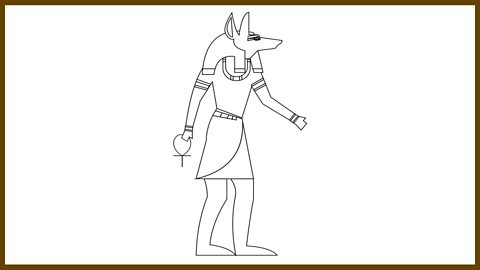
Teacher's Notes
This animation gives a snapshot of Ancient Egypt and how important gods and goddesses were to the society and culture.
It provides a platform to discuss faith and belief and why gods and goddesses played such an important role in Ancient Egyptian life and death.
It can be used to help the pupils understand how we find out about the past and the role of sources or artefacts in this exploration.
We find out how the mummification process took place and in turn have an exciting platform for investigation in Science in relation to decomposition and decay.
The video provides an opportunity for pupils to discuss how Ancient Egyptian beliefs can be compared and contrasted with modern day beliefs and religions.
Points for discussion (History Linked)
- What is an artefact or source?
- What was the job of the artefact explored in the clip?
- Which types of people in Ancient Egypt became mummies?
- What happened during the process of mummification?
- Can you name any of the gods or goddesses and what they were believed to have done?
- What was a 'state' god?
- What was a 'local' god?
- Why did the Ancient Egyptians think their gods and goddesses were so important?
- What jobs did they believe they had in the afterlife?
Suggested Activities (Cross Curricular opportunities)
Qualities and beliefs – The Ancient Egyptians worshipped their many gods and goddesses due to the qualities and characteristics they believed that they brought to the afterlife. If the pupils were looking at qualities they think are important, how would they design their own Ancient Egyptian god or goddess?
Investigating decomposition? – The process of mummification took place to preserve the body of very important Ancient Egyptians. Pupils can explore ways to speed up decomposition. Using pieces of fruit and vegetables, can pupils create an environment where decomposition may happen faster, or an environment that it can happen more slowly? Using their scientific knowledge, pupils can make predictions and justify these.
Creating a mummy – The Ancient Egyptians found that the hot and dry conditions of the sand in Egypt helps dry out and preserve the bodies of the pharaohs. Can the pupils test this finding? Using two pieces of bread or home-made play dough, place one in an airtight container or bag alone and other in the same container but with sand. Leave the one with sand close to a radiator and the other away from a heat source. Watch and observe over time and see which begins to change as it rots first. Were the Ancient Egyptians onto something with their mummification process?
What is mummification? - Pupils to explore the process of mummification following watching the video. Pupils to explore what tools were needed and the order and timings of the process. Following research, pupils can write a set of instructions as to how to carry out the mummification process.
This film is relevant for teaching History at KS2 in England, Wales and Northern Ireland and 2nd Level in Scotland.
The River Nile. video
Understanding the key role of the River Nile in the establishment and success of Ancient Egypt.
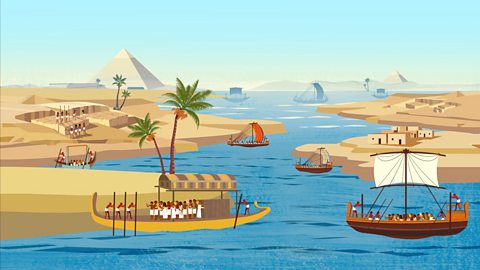
Pyramids. video
Exploring the different types of pyramids in Ancient Egypt - their construction and their purpose.
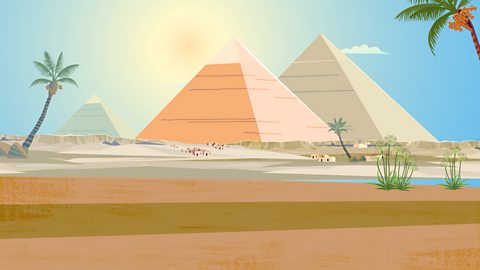
King Tutankhamun. video
Exploring the life and death of King Tutankhamun and the excavation of his tomb in 1922.
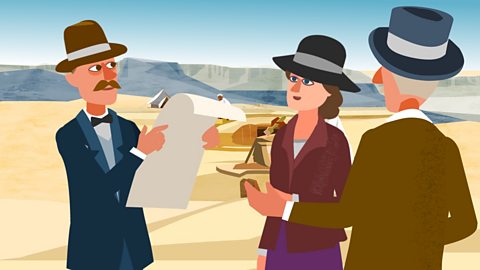
See also...
KS2 Music: Ancient Egypt. collection
A collection of fun, catchy songs and activities to help you consolidate your study of Ancient Egypt.
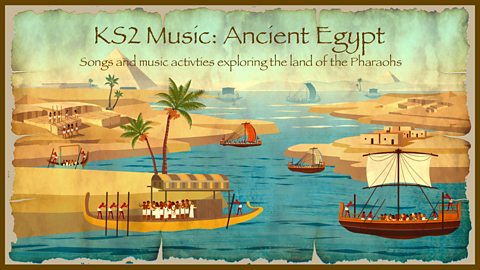
Song: 'So many gods and goddesses'
Join in with a song about some of the most important of the Ancient Egyptian gods.
